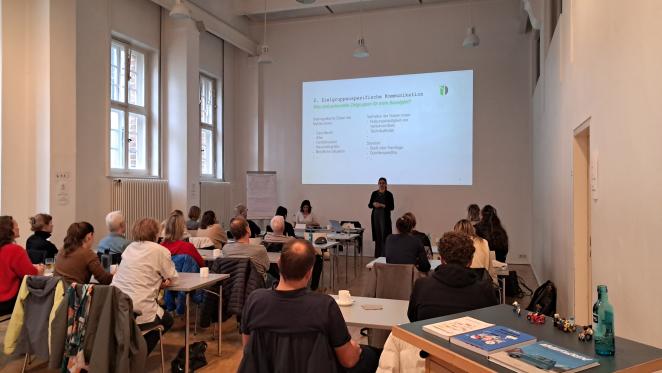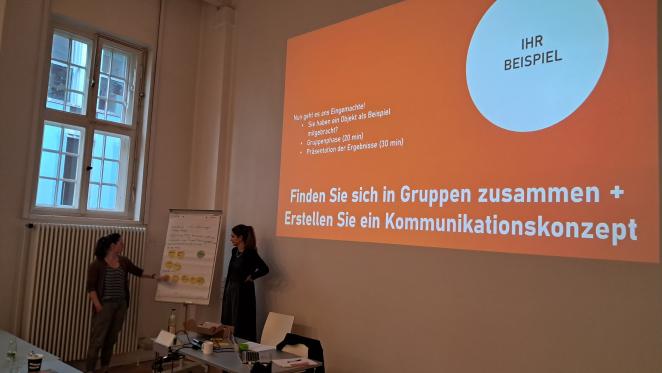On October 30th, the City of Bremen hosted the fourth and final seminar on mobility management for architects and planners:
"Without communication, nothing works!"
In collaboration with the Bremen Chamber of Architects, the Free Hanseatic City of Bremen, lead partner of SN², hosted the last of four modules on mobility management.
The module aimed to raise awareness among architects and planners about the specific barriers, needs, and requirements of various target groups, while also encouraging them to reflect on the various motivational factors that influence the adoption of shared or active mobility modes. The focus was on understanding how these factors relate to the use of mobility services provided in real estate developments. The ultimate goal was to equip participants with the skills to design an effective communication plan for implementing mobility management measures in newly developed building sites. The session featured Stella Reuleke and Lisa Tschink from LaneChange as guest speakers, who shared valuable expertise.

Our Main Take Aways
Communication of mobility management measures in new buildings must happen at least 7 times and through different channels to influence a person
It has to be continues over the whole life span of the mobility managemen measures.
Communication must also happen throughout different critical phases and at unique windows of opportunity:
Before moving / Before starting new job
Upon moving / Upon starting new job
Whilst living / Whilst working for a company

Best Practice Examples
Easy to read posters with a clear message and QR codes for video embedding(e.g. a video about this is how car-sharing works)
“Shared Mobility Tupper Ware” Parties to promote the offered mobility measures in a familiar setting
This is our “Mobility Management” Information Days once a year
The yearly “Birthday Reminder Card” with all mobility management options available for users of the building
The “Welcome Package” for new residents and employees upon signing the rent or work contract
And the list goes on.
To Look Forward To
Bremen will provide adaptable templates for good and continuous communication of mobility management measures in real-estate developments
Posters
Postcards
Information Signs
(for parking, bike parking, all shared mobility infrastructure in the building)
Flyers
Our Conclusions
On the one hand effective communication of provided mobility management measures in real-estate developments needs to break down barriers such as the lack of knowledge of the concept of shared mobility, the assumption of shared mobility to be too expensive, and of course the “fear” of missing out or loosing independence by getting rid of a private car.
On the other hand, good communication should enhance motivation to uptake shared or active mobility by pointing out the benefits of using provided measures. Good communication will highlight aspects like convenience, comfort, security, simplicity and will also use positive narratives instead of negatively connotated ones like “car free cities”.
Written by: Cornelia Cordes from the City of Bremen
